As an Amazon Associate, I earn from qualifying purchases
Women who love the great outdoors understand the importance of reliable and comfortable hiking gear. When it comes to conquering the trails, the right pair of hiking shoes can make all the difference. In this article, we’ll delve into the world of women’s hiking shoes, with a specific focus on the crucial feature of waterproofing.
Women’s Hiking Shoes
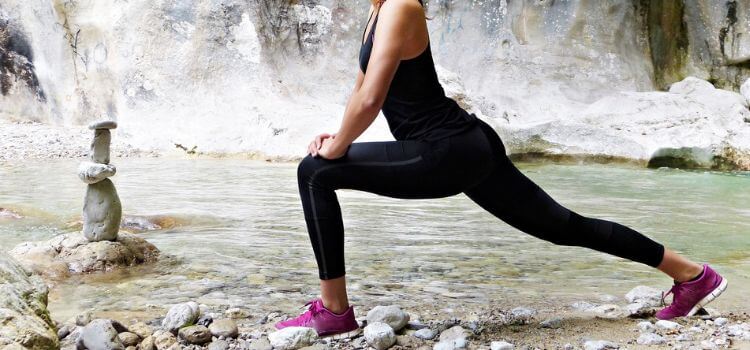
Before we dive into the waterproof aspect, let’s explore the broad spectrum of women’s hiking shoes. These shoes are not just footwear; they are your companions on the rugged journey, providing support, stability, and protection.
Importance of Waterproof Features
Picture this: You’re on a trail, and the weather takes an unexpected turn. Rain starts pouring down, and puddles begin to form. This is where the waterproof feature of hiking shoes becomes a game-changer. Keeping your feet dry ensures comfort and prevents blisters and discomfort during your outdoor escapades.
Choosing the Right Waterproof Material
Selecting the right waterproof material is paramount to ensuring your women’s hiking shoes stand up to the elements. Gore-Tex technology, known for its exceptional waterproof and breathable qualities, is a top choice. Understanding the distinction between water-resistant and waterproof materials is crucial to guiding you toward optimal protection during your outdoor adventures.
1. Gore-Tex Technology
One of the leading technologies in waterproofing is Gore-Tex. We’ll explore how this technology works and why it’s a popular choice among outdoor enthusiasts.
2. Water-Resistant vs. Waterproof
Understanding the distinction between water-resistant and waterproof is crucial. We’ll break down the differences and help you make an informed decision based on your hiking needs.
Top Brands in Women’s Hiking Shoes
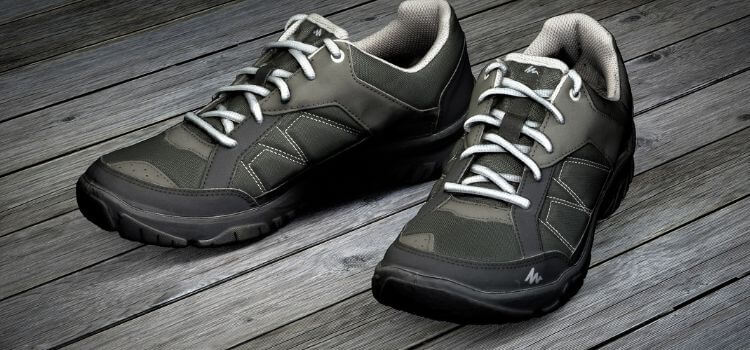
Let’s take a closer look at some of the top brands that have excelled in crafting quality women’s hiking shoes. From Merrell’s innovative designs to Salomon’s commitment to performance, we’ve got you covered.
1. Merrell
Known for durability and versatility, Merrell has been a go-to choice for many hikers. We’ll explore what sets Merrell apart in the world of hiking footwear.
2. Salomon
Salomon’s reputation for creating high-performance gear extends to their hiking shoes. Discover the features that make Salomon a trusted brand among female adventurers.
3. Columbia
Columbia’s range of hiking shoes caters to various preferences. We’ll discuss the technology and design elements that make Columbia a prominent player in the market.
Features to Look for in Women’s Hiking Shoes
Ensuring your hiking shoes meet specific criteria is essential. We’ll cover key features such as durability, traction, and comfort to guide you in making the right choice.
1. Durability
Investing in durable hiking shoes ensures they can withstand the rigors of different terrains. We’ll provide insights into materials and construction techniques that contribute to longevity.
2. Traction and Grip
A slip-free hike is a happy hike. Learn about the importance of traction and grip, especially when navigating challenging trails.
3. Comfort and Fit
Comfort is paramount during long hikes. We’ll discuss how to find the right fit and the importance of considering individual foot anatomy.
Best Practices for Hiking Shoe Maintenance
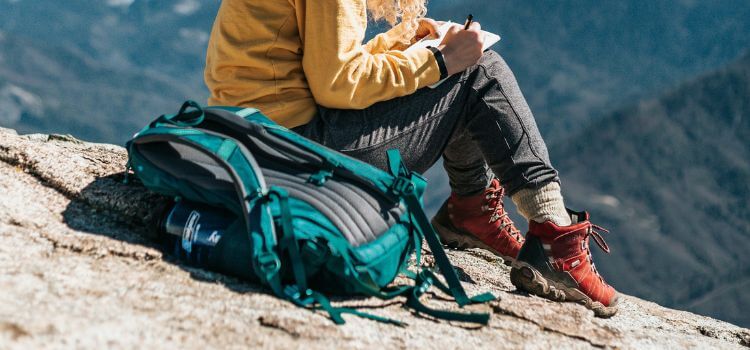
Maintaining your women’s hiking shoes is key to extending their lifespan and preserving their performance. Regularly clean off dirt and mud using a soft brush, and if needed, a damp cloth. Allow your shoes to air dry naturally, avoiding direct heat sources that may damage materials. Reapply waterproofing treatments periodically to enhance water resistance.
Check and tighten laces, ensuring a secure fit, and inspect the soles for signs of wear. Storing your shoes in a cool, dry place away from direct sunlight contributes to their longevity, ensuring they’re ready for your next adventure.
Comparing Mid-Cut and Low-Cut Hiking Shoes
When it comes to choosing between mid-cut and low-cut hiking shoes, understanding the differences is crucial for an informed decision. Mid-cut hiking shoes provide additional ankle support, making them suitable for more challenging terrains and longer hikes. On the other hand, low-cut hiking shoes are lighter and offer greater freedom of movement, ideal for less demanding trails and a swifter pace.
Consider the type of terrain you’ll be exploring and your personal comfort preferences when making this decision. Both styles have their merits, and selecting the right one enhances your overall hiking experience.
The Evolution of Women’s Hiking Shoe Designs
The evolution of women’s hiking shoe designs reflects a dynamic blend of functionality and style. From traditional, heavy-duty models to modern, lightweight designs, the industry has seen a remarkable transformation. Technological advancements have played a pivotal role, introducing features like enhanced breathability, improved waterproofing, and innovative sole constructions. Sleek and stylish designs have become more prevalent, offering a balance between performance and aesthetics.
As women’s roles in outdoor activities have expanded, so too have the options, ensuring that today’s hiking shoes not only meet rigorous performance standards but also cater to diverse tastes and preferences. The evolution continues, promising even more exciting developments in the future.
Environmental Impact of Hiking Shoes
As responsible consumers, it’s essential to consider the environmental impact of our choices. We’ll discuss sustainable materials and eco-friendly brands committed to reducing their carbon footprint.
1. Sustainable Materials
Learn about materials like recycled polyester and eco-friendly leather, contributing to sustainable practices in hiking shoe production.
2. Eco-Friendly Brands
Discover brands that prioritize eco-conscious manufacturing processes and are actively working towards reducing environmental impact.
Tips for Breaking in New Hiking Shoes
Breaking in new hiking shoes is a crucial step to ensure comfort and prevent discomfort during your outdoor adventures. Start by wearing them around the house for short periods to let your feet adjust gradually. Gradually increase the duration and intensity of wear with short walks before tackling more extended hikes. Pay attention to any areas causing discomfort and address them promptly, whether through lacing adjustments or additional cushioning.
Choose appropriate socks that wick away moisture and reduce friction. Lastly, plan for shorter, less demanding hikes initially to allow both you and your new hiking shoes to adapt seamlessly to each other. Taking these steps will make breaking into your new shoes a smooth and enjoyable process.
Common Myths about Women’s Hiking Shoes
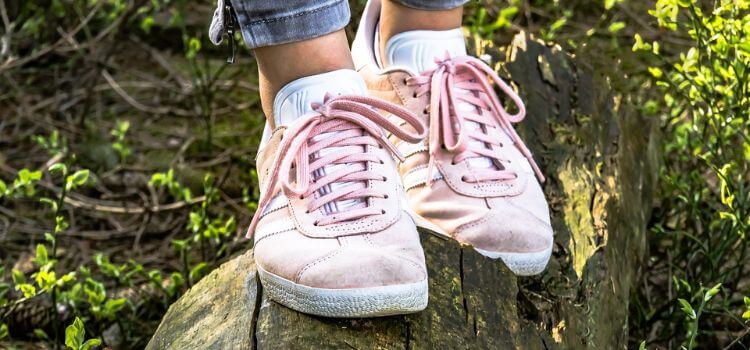
Let’s debunk some common myths surrounding women’s hiking shoes, addressing concerns like the need for bulkiness and the misconception that all waterproof shoes are heavy.
1. Do Hiking Shoes Need to Look Bulky?
We’ll discuss how sleek designs can offer both style and functionality, debunking the myth that hiking shoes need to be bulky.
2. All waterproof shoes are heavy?
Not all waterproof shoes weigh you down. We’ll explore lightweight options that provide excellent waterproofing without compromising on comfort.
Personal Stories: Women and Their Hiking Adventures
Embark on a journey through the personal stories of women and their hiking adventures, where the trails become a canvas for empowerment and self-discovery. Hear tales of overcoming challenges, finding solace in nature, and forging connections with fellow hikers. These narratives capture the essence of the bond between women and their hiking shoes, highlighting the pivotal role they play in turning every outdoor escapade into a memorable experience.
From conquering towering peaks to navigating serene forests, these stories inspire a sense of camaraderie and celebrate the transformative power of the great outdoors for women around the world.
Guidelines for Sizing Women’s Hiking Shoes
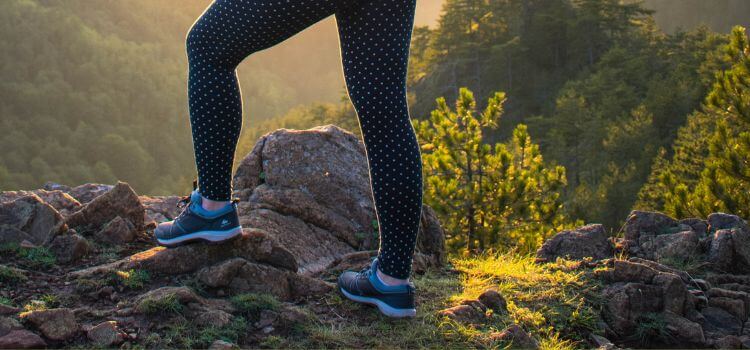
Precision in sizing is the unsung architect of comfort and peak performance, crafting a seamless union between form and function. We’ll guide you through the sizing process and offer tips on finding the perfect fit. Selecting the right size for women’s hiking shoes is crucial for comfort and performance on the trails. Follow these guidelines to ensure an optimal fit:
- Measure Both Feet: Feet can differ in size, so measure both and choose the size that accommodates the larger foot.
- Consider Sock Thickness: If you often wear hiking socks, measure your feet while wearing them to ensure a more accurate fit.
- Check brand-specific sizing charts: Different brands may have slight variations in sizing. Navigate the seas of sizing with confidence by consulting the brand’s exclusive sizing chart for tailor-made guidance.
- Allow Room for Toes: Ensure there’s about a thumb’s width of space between your longest toe and the front of the shoe to prevent discomfort and blisters.
- Test the Fit: Walk around in the shoes to assess comfort and make sure there’s no pinching or rubbing. Pay attention to the heel and arch supports.
- Consider Width: Some brands offer shoes in different widths. If you have wider or narrower feet, opt for a width that suits you.
- Factor in Terrain and Activity: For rough terrain or long hikes, a slightly roomier fit might be preferable to accommodate foot swelling.
- Shop in the Afternoon: Feet tend to swell as the day progresses, so shopping for shoes in the afternoon can help ensure a more accurate fit.
By following these guidelines, you’ll increase the likelihood of finding the perfect size for your women’s hiking shoes, enhancing your overall comfort and enjoyment on the trails.
How to Deal with Wet Hiking Shoes
Encountering wet conditions during a hike is inevitable, but knowing how to deal with wet hiking shoes can make all the difference in maintaining comfort and performance. Here’s a guide to handling wet hiking shoes:
- Remove Excess Moisture: Shake off any loose dirt and water from the exterior of the shoes. If possible, remove the insoles to allow both the shoes and insoles to dry more efficiently.
- Air Dry Naturally: Avoid using direct heat sources like heaters or hairdryers, as excessive heat can damage the materials. Instead, let your hiking shoes air dry at room temperature.
- Stuff with Newspaper: To speed up the drying process, stuff your wet hiking shoes with newspaper. The paper absorbs moisture and helps maintain the shoe’s shape.
- Dry in a Well-Ventilated Area: Place your shoes in a well-ventilated area with good air circulation. This helps prevent the growth of odor-causing bacteria and ensures thorough drying.
- Rotate Shoes: If you have a spare pair of hiking shoes, consider rotating them during your outdoor activities. This allows one pair to dry thoroughly while you wear the other.
- Use waterproofing sprays: Apply a waterproofing spray designed for your shoe’s material once they are dry. This helps restore water repellency and prepares them for future wet conditions.
- Clean and Maintain: Regularly clean your hiking shoes to prevent dirt buildup, which can affect waterproofing. Follow the manufacturer’s guidelines for cleaning and maintenance.
- Carry Extra Socks: Pack extra pairs of moisture-wicking socks during your hike. Changing into dry socks can make a significant difference in comfort, even if your shoes remain damp.
By following these steps, you’ll effectively manage wet hiking shoes, ensuring they stay in good condition and are ready for your next outdoor adventure.
Conclusion
In conclusion, investing in the right pair of women’s hiking shoes, with a focus on waterproof features, empowers you to tackle any trail with confidence. The blend of technology, design, and sustainability ensures your outdoor adventures are both enjoyable and responsible.
Frequently Asked Questions (FAQs)
- Are all hiking shoes waterproof?
- Not all hiking shoes are waterproof. It depends on the materials used and the specific design of the shoe. Look for brands and models explicitly labeled as waterproof for reliable protection against wet conditions.
- How often should I replace my hiking shoes?
- The lifespan of hiking shoes varies depending on usage, terrain, and maintenance. On average, consider replacing them every 500 miles or when you notice a decline in performance, such as reduced traction or compromised waterproofing.
- Can I wear hiking shoes for activities other than hiking?
- While hiking shoes are designed for rugged terrain, many people find them comfortable for various outdoor activities. However, for specific sports or activities, it’s advisable to choose footwear designed for those purposes.
- Are there eco-friendly options for women’s hiking shoes?
- Yes, several brands prioritize sustainability in their manufacturing processes. Look for shoes made from recycled materials or those produced by brands committed to minimizing their environmental impact.
- How can I prevent blisters when wearing new hiking shoes?
- To prevent blisters, gradually break in new hiking shoes before embarking on long hikes. Start by strolling around your abode, venture into brief walks, and progressively extend the duration to acquaint yourself with the seamless embrace of each step. Additionally, ensure a proper fit and consider using moisture-wicking socks.
As an Amazon Associate, I earn from qualifying purchases

Leave a Reply